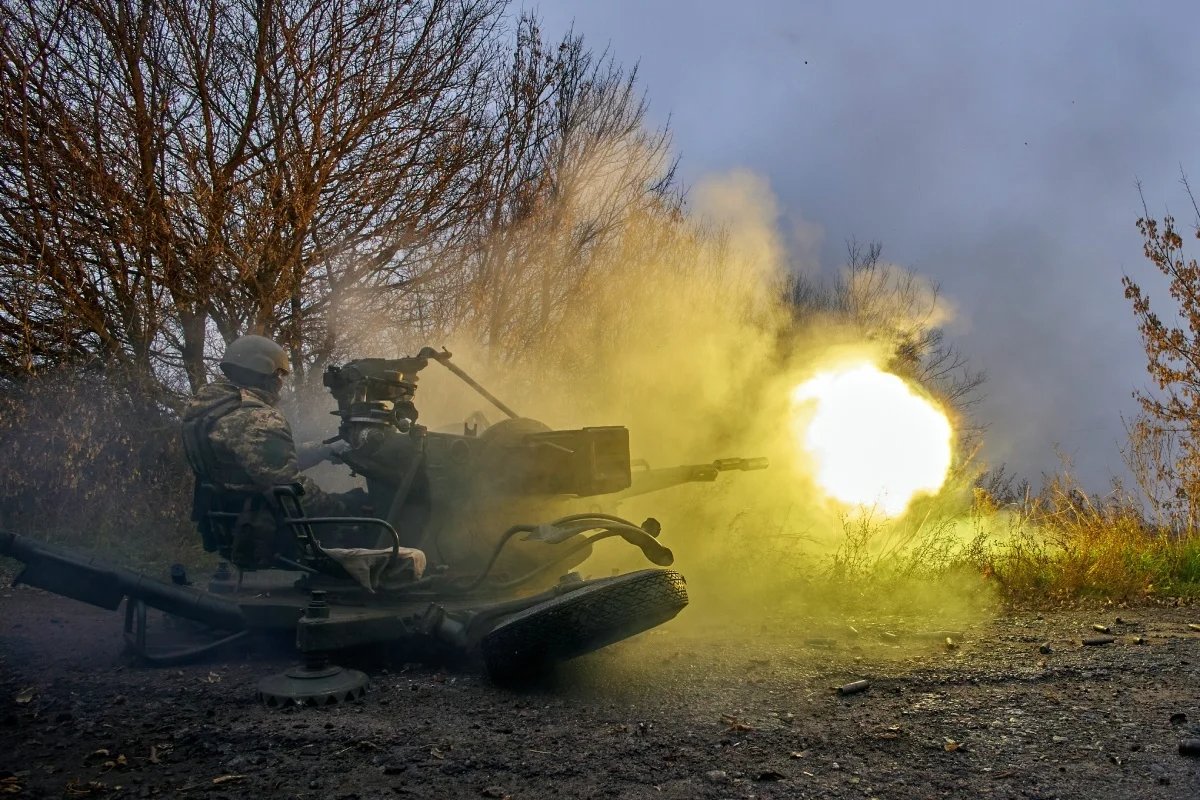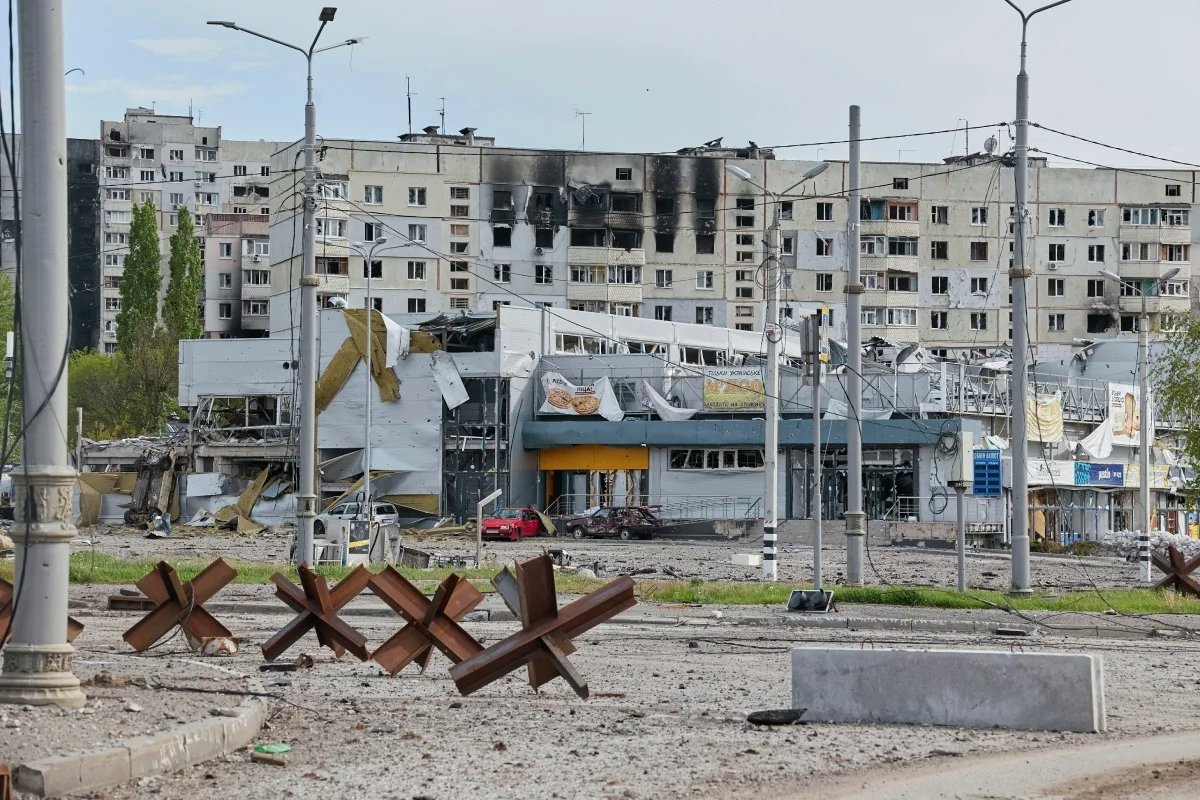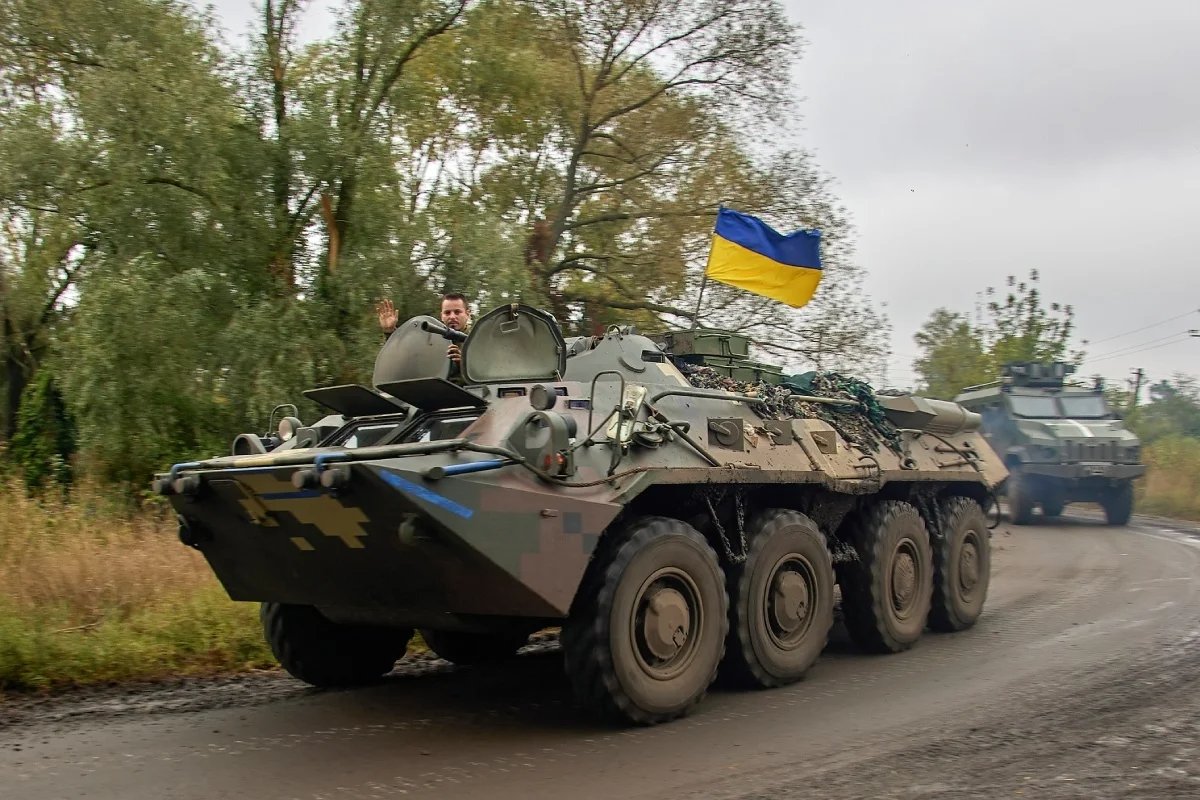Reports of an upcoming major Russian offensive on Ukraine’s second city Kharkiv fail to take into account how capable of launching a large-scale assault Russia may be in the foreseeable future.
Julian Röpcke, a military analyst with German newspaper Bild, wrote in December that Russia was prepared to continue its war in Ukraine until 2026, and was ready to lose up to 100,000 soldiers every year.
According to Röpcke, Russian President Vladimir Putin expects a decrease in Western support for Kyiv and plans to advance Russian troops further west, hoping to capture Dnipro, Kharkiv and Zaporizhzhia by late 2026.
However, Kremlin sources told Russian independent media outlet Meduza in late March that Russia had “more realistic goals”, planning to capture Kharkiv and then gradually end active hostilities in Ukraine.
Kharkiv, a city in eastern Ukraine 35 kilometres from the Russian border, has been under near-constant shelling since the start of the invasion, but there has been no full-scale offensive on Kharkiv since the doomed attempt to encircle the city in the winter and spring of 2022.
Commenting recently on reports of a potential Russian offensive on Kharkiv, Commander-in-Chief of the Armed Forces of Ukraine (AFU) Oleksandr Syrskyi recalled the 2022 Ukrainian counteroffensive that liberated the key regional towns of Izium, Kupyansk and Balakliya, which had initially been captured by Russian forces.
Syrskyi, who led the Kharkiv operation and was awarded the title of Hero of Ukraine for his success, added that the decision to launch a new offensive on Kharkiv “could be fatal” for the Russian army, and vowed that Ukraine was taking all necessary measures to be prepared for it.
Speculation or fact?
Israeli military observer David Sharp is critical of reports of a possible offensive on Kharkiv. “We must look at the facts, not at someone’s empty speculations,” he said, adding that Russia currently does not have the necessary forces or resources for an offensive on such a scale.
Ukrainian military expert Roman Svitan also dismissed the reports of a Kharkiv offensive as “speculative”, suggesting it was a deliberate hoax spread by Russia to put psychological pressure on Kharkiv’s population and on Ukrainians in general.
Russian President Vladimir Putin may have hinted at a potential Russian offensive on Kharkiv when he announced the creation of so-called “buffer zones” aimed at ending the shelling of Russian territories, according to military researcher Kirill Mikhailov. The western Russian city of Belgorod, which has come under increased shelling by Ukraine in recent months, is not far from the border with the Kharkiv region, he explained.
Russia would need to deploy extra personnel for an operation of this scale, either by withdrawing troops from other areas of the frontline or by drafting more recruits into the army, Mikhailov added. Besides, Russia lacks the military equipment necessary for a fresh offensive. “Even at the current pace of the offensive, Russia is losing a significant number of equipment and artillery shells,” Mikhailov said.

A soldier’s body lies next to a burnt out Russian armoured personnel carrier near Kharkiv, Ukraine, February 2022. Photo: Sergey Kozlov / EPA-EFE
More than it can chew
To launch an offensive on Kharkiv, the Kremlin would need to create a grouping of 100,000-150,000 soldiers on the frontline in addition to the units already fighting, Sharp noted. This is roughly equal to 40-50% of all Russian soldiers in Ukraine, and comparable in size to the initial invasion force in 2022, which Western estimates put at around 200,000 troops.
“It can’t be done discreetly,” Sharp stressed, adding that intelligence agencies had not reported a build up in Russian troop numbers deployed to the small corner of the Kharkiv region under its control.
Sharp agreed with Mikhailov that in order to attack Kharkiv, Russia would either have to withdraw most of its other units engaged in active combat from elsewhere on the frontlines or announce a fresh wave of mobilisation.
Russian troops suffered heavy losses in eastern Ukraine in 2023, first by advancing on Bakhmut, then repelling the Ukrainian counteroffensive, and then returning to offensive action with the advance on the towns of Avdiivka and Kupyansk, Sharp added.
Svitan noted that it made “zero sense” to discuss the capture of big cities by Russia at this stage of the war, adding that in launching any kind of offensive on Kharkiv, Russia risked “biting off more than it can chew”.
According to Mikhailov, in over two years of war in Ukraine, Russia has yet to launched a single operation that would be similar in scale to an assault on Kharkiv, as its attempts to encircle Kyiv and Kharkiv failed at the start of the full-scale invasion.
“Why should the Russians succeed in 2024 where they failed in 2022?” Mikhailov asked.

A Ukrainian soldier fires from an anti-aircraft gun at a position near Kharkiv, November 2022. Photo: Sergey Kozlov / EPA-EFE
A blunt meat grinder
The Russian capture of the eastern Ukrainian city of Mariupol in 2022 is the only operation that a potential offensive on Kharkiv could be compared to, experts said, adding, however, that Mariupol had been in a far more difficult position at the start of the war. The city was surrounded by Russian troops and completely cut off from supply lines, and its encirclement was made much easier by the fact that Mariupol largely bordered the Sea of Azov, which was dominated by Russia’s Black Sea Fleet at the time.
Besides, the assault on Mariupol was carried out by professional soldiers, who, for all their shortcomings, were much better trained than today’s Russian army recruits. Even then, Russia still suffered serious losses.
While Russia was able to bomb Mariupol from aircraft flying directly over the city, this would not be the case in Kharkiv, Svitan explained, adding that Russia would only be able to bomb Kharkiv with glide bombs from a long distance. This would mean that they wouldn’t hit Ukrainian positions directly, but would cause mass civilian casualties, Svitan said.
“When there’s a city in the way, the Russian army simply perceives it as more difficult terrain for an offensive,” Kirill Mikhailov said. “This tactic inevitably leads to war crimes.”
If Russia chooses to storm Kharkiv, “a months-long bloodbath” will begin, just like those already seen in Mariupol, Bakhmut and Avdiivka, where the Russian army demolished block after block of each city systematically, Mikhailov added.
However, in the case of Kharkiv, a city with a population of 1.5 million, Russia may simply lack the ammunition required to successfully wage a scorched-earth campaign, but the destruction would still be “huge”, Mikhailov said.
What’s more, Russian aircraft would be in range of Ukrainian air defences, Roman Svitan noted, meaning that any offensive on Kharkiv would involve the risk of Russia losing very costly planes.
A city does not have to be stormed, it can be surrounded instead, Sharp noted, which would force its defenders to pre-emptively withdraw or surrender, exactly what happened during Ukraine’s liberation of Kherson in the autumn of 2022.
Assaulting a large, well-fortified city that is not surrounded is “a very thankless task”, he added. “It’s a blunt meat grinder that would cause huge losses of personnel and equipment.”

Damaged buildings on the outskirts of Kharkiv, May 2022. Photo: Sergey Kozlov / EPA-EFE
Bomb them all
While localised fighting has been reported in the Kharkiv region, Russian troops have not made any operational advances in a long time, David Sharp said.
It seems that the task set by the Russian army command is to reach the Oskil River and to retake the city of Kupyansk, which Ukraine liberated in the 2022 counteroffensive, Sharp added, noting that while it was “a feasible task”, it would put great strain on the units deployed to the region.
“Encircling Kharkiv looks like an overly ambitious strategic goal,” Sharp noted.
According to Svitan, Kharkiv is currently in danger of increased Russian glide bomb and missile attacks, but it is unlikely to be encircled in the near future. “A frontal assault is also doomed to failure. The attackers will get bogged down in street battles and waste their forces without moving forward significantly,” Svitan added.
Russian glide bombs are one of Russia’s most effective tools in this war, Mikhailov noted, especially those equipped with special “universal planning and correction modules”, which can turn conventional bombs into guided munitions. Such bombs can destroy enemy defence lines from a long distance away without being hit by air defence fire, Mikhailov explained.
“However, the incomparably smaller Avdiivka was bombed for months until it became impossible to defend,” Mikhailov pointed out.
Aid required
Ukraine is now building defence lines and fortifications near Kharkiv, Mikhailov said, similar to Russian lines of defence in southern Ukraine that the AFU failed to break through during the 2023 summer offensive.
Russia will only manage to encircle Kharkiv if it breaks through these fortification lines and moves deeper into Ukrainian territory, Mikhailov noted.
“Such a serious breakthrough of AFU defences is only possible if Ukraine stops receiving allied aid altogether and runs out of ammunition,” Mikhailov explained.
Defending Kharkiv would require the AFU to deploy very significant forces to cover a huge area and to block dozens of roads, to avoid a repeat of the situation at the end of February 2022, when Russian special forces briefly managed to enter the city.
Sharp agreed that the situation also largely depended on Ukraine’s arms supplies: “If the ammunition shortage worsens, the AFU will begin to suffer greater losses than they are now. This could lead to localised breaches of Ukrainian defences.”
In turn, Svitan said that the shells Kyiv was receiving from its European partners were so far enough to hold its defensive line, but noted that Ukraine lacked sufficient equipment to launch offensive actions. Despite the US “dragging their feet for four months”, Ukraine has managed to hold its positions for now, Svitan noted.

A Ukrainian serviceman in an armoured personnel carrier near the village of Kozacha Lopan, north of Kharkiv, September 2022. Photo: Sergey Kozlov / EPA-EFE
Mikhailov is confident that Western supplies to Ukraine will grow even without US participation. “Time is working rather against the Russian side today,” he said, adding that Ukraine is expected to receive new air defence equipment and F-16 fighter jets, which will be able to hit Russian bombers at great distances.
All these factors combined meant that a successful assault on Kharkov is likely beyond the capability of the Russian army at present, Mikhailov concluded.

